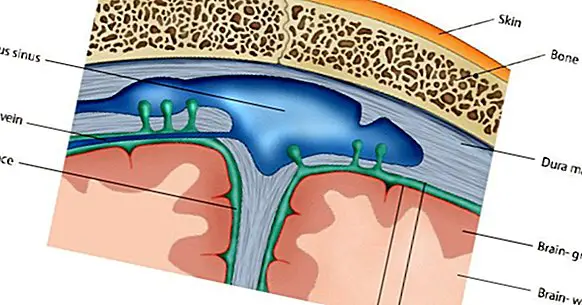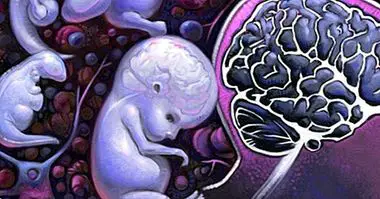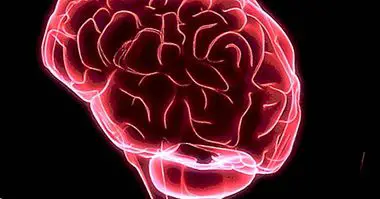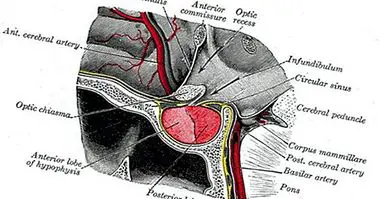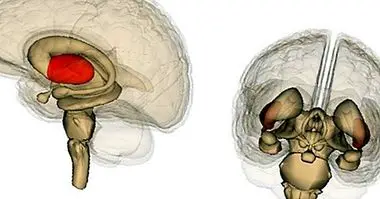Dura mater (brain): anatomy and functions
The brain is one of the most fundamental organs for the human being, governing both the mental processes and cognitive-emotional capacities as well as the different systems and organs of the body, including the control of vital signs.
It is therefore a fundamental and essential organ for life, being necessary some protection before any possible damage that could come from outside. The skull is an excellent barrier of protection, but nevertheless it is not the only barrier present.
There are a series of membranes called meninges between the skull and brain They also serve, among other things, as protection for the brain and the nervous system as a whole. One of them is the dura mater.
The dura mater: the outermost of the meninges
The meninges are a series of three membranes called dura, arachnoid, and pia mater that surround and protect the brain. These membranes are located between the skull and the brain, being located one after another and circulating between them different blood vessels and fluids such as cerebrospinal fluid. Their presence does not occur only in the brain, which they cover in their entirety, but in addition to it they are present in a large part of the spinal cord.
The outermost of the three and to which this article is dedicated is the dura mater . It is the thickest and most resistant meninx, in close contact with the skull. Its rigidity and the different extensions that it has covering the brain make it retain its shape and internal consistency. It also contains a large part of the veins that collect the blood used by the brain and return it to the heart. The dura mater covers most of the nervous system with great precision, reaching from the brain to the sacral vertebrae of the spinal cord.
As much the dura as the rest of the meninges contain and are connected by different nerve fibers, possessing multiple Pressure and pain receptors . In the dura itself highlight the presence of trigeminal and vagus nerves, as well as the first three spinal nerves. It is, in short, a layer of the meninges that acts as a "bridge" between the central nervous system and the elements of the organism that are beyond it.
Anatomical structure of the dura mater
If we analyze the dura mater and its composition, we can observe how this meninx possesses and It is composed mainly of two large layers, the periosteal layer and the meningeal layer , starting from the last four large partitions that divide the cavity of the skull in different parts or cells.
1. Periosteal layer
The first layer of the dura is the so-called periosteal or endosteal layer, which is the part of the meninx that is attached to the skull. It is in this layer that most of the blood vessels that supply the brain can be found. It is found only at the cranial level, not being present in the spinal cord.
2. Meningeal layer
Later you can find the meningeal layer, of great strength and with a high content of collagen. It is from this layer where a series of partitions are prolonged, which are what contribute to shape the brain keeping the boundaries between the different structures.
These partitions of the dura, which divide the cranial cavity into different cells, are the following.
2.1. Sickle of the brain
The sickle name of this septum is due to the fact that it cuts or divides the cerebral fossa into two parts. It is located in the middle part of the skull, vertically.
2.2. Cerebellum store
This wall of the dura separates the occipital lobes and the cerebellum. Protect the mesencephalon. It also delimits and protects the trigeminal nerve.
2.3. Sickle of the cerebellum
As in the sickle of the brain, this partition keeps divided in two halves one of the structures of the brain . In this case, this septum keeps the two cerebellar hemispheres separate.
2.4. Pituitary gland shop
It is a partition that surrounds the Turkish chair , part of the skull where the pituitary gland lodges, to which it protects.
Principal functions
The existence of the dura is a great advantage for human survival . The main functions of this membrane, although it has been possible to glimpse previously, are the following.
1. Protects the brain and spinal cord
The main function of the dura and other meninges is to protect the nervous system . This protection occurs both at a biological level, since it acts as a filter that hinders the entry of external harmful agents, as well as physically, since between the presence of the skull, the membrane itself and the cerebrospinal fluid, it is difficult for the blows to affect and damage the brain.
2. Contributes to maintain the shape of the brain
The division into cells of the cranial cavity, which is given thanks to the dura mater walls, allows the structure of the different locations and parts of the brain to be maintained , as well as its general form.
3. Prevents the movement of brain tissue
The presence of the meninges causes the brain to remain in place , limiting the displacement that could occur before the mere movement of the body.
4. Irrigate the brain
In the dura mater there are a lot of blood vessels , especially those in charge of returning to the heart the blood from which the brain has already consumed the nutrients, ie the veins. Thus, this layer of the meninges plays an important role in making a good part of the central nervous system function as it should and can evacuate the excess blood.
However, this function of the dura also exposes it to risks in the form of pathologies, such as very dangerous aneurysms, meningitis-like infections or ischaemia.
5. Perception of pain and brain tension
Both the dura mater and the rest of the meninges are innervated by different nerves, containing a large number of receptors. These receptors represent a mechanism for the physiological detection of brain problems . They allow for example to perceive the pain associated with the pressure of the brain against the skull, and they are even the main responsible for suffering from headaches.
This function is especially vital for survival, since the brain itself has no receptors that can warn of the occurrence of an internal evil. In other words, without the presence of meninges we would not be able to detect headaches that can warn of problems and give us time to react shortly before very delicate areas of the nervous system are damaged.
Bibliographic references:
- Kandel, E.R .; Schwartz, J.H .; Jessell, T.M. (2001). Principles of Neuroscience. Madrid: McGraw Hill
- Martínez, F .; Tomorrow, G .; Panuncio, A. and Laza, S. (2008). Anatomo-clinical review of the meninges and intracranial spaces with special reference to chronic subdural hematoma. Revista Mexicana de Neurociencia: 9 (1): 17-60.

